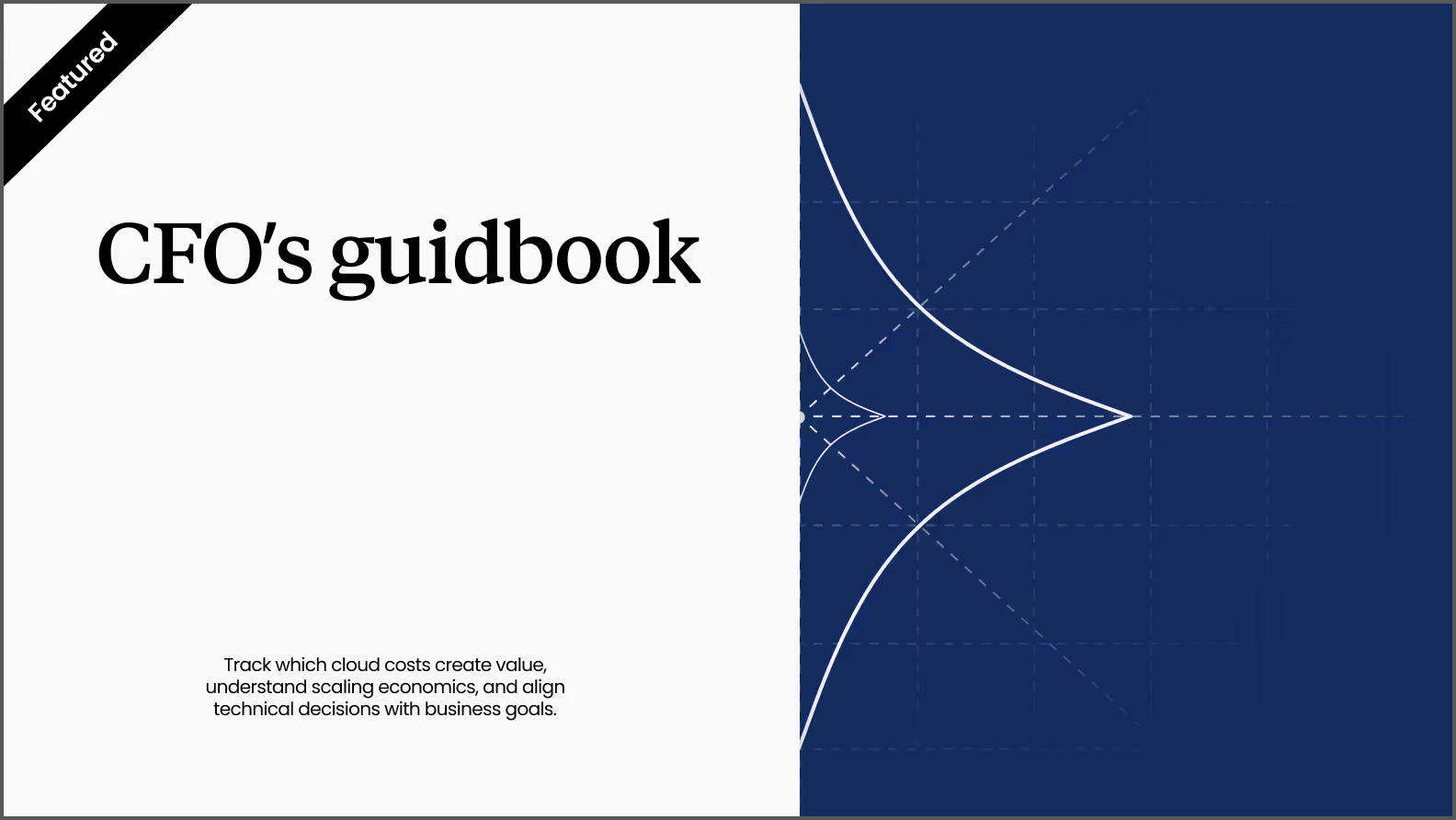The Rule of 40: SaaS Metrics and Profitability Guide


TL;DR
Pelanor is reimagining cloud cost management with AI-native FinOps tools that explain spending, not just track it. By rebuilding the data layer from scratch, we deliver true unit economics across complex multi-tenant environments - revealing what each customer, product, or team actually costs. Our AI vision is deeper: we're building systems that truly reason about infrastructure, learning what's normal for your environment and understanding why costs change, not just when.
Understanding the Rule of 40
The origin story
The Rule of 40 wasn’t born in a spreadsheet or MBA classroom. It came from a board meeting. Brad Feld, a venture capitalist and co-founder of Techstars, first blogged about it in 2015, after hearing it from a late-stage investor. The idea was to reconcile two things SaaS companies rarely have at the same time: growth and profitability.
The timing wasn’t random. After the SaaSacre of early 2016—when Wall Street decided that “growth at all costs” was, in fact, a terrible business model—investors started favoring companies that could grow and make money. Or at least, not lose obscene amounts of it.
What is the Rule of 40?
It’s this:
Revenue Growth Rate (%) + EBITDA Margin (%) ≥ 40%
That’s it, that’s the whole thing. If your company is growing revenue at 60% and losing money at a -20% margin, you’re fine. On the other hand, if you're a mature company growing at 10%, you'd better have a 30% profit margin, or start practicing your “we’re pivoting” pitch. The beauty of the Rule of 40 is that it’s so clean, it fits in a tweet. The problem with the Rule of 40 is that it fits in a tweet.
Why do investors love it?
Because it gives them a shortcut. A high-level sniff test. You’re either “above 40,” in which case you are Efficient and Scalable and probably Deserve a High Multiple… or you’re “below 40,” in which case, hmm, maybe we take another look at that burn rate.
But, and this is important, context matters. Early-stage startups with great product-market fit might flunk the Rule of 40 while becoming the next unicorn. Meanwhile, a boring SaaS tool with slow growth and tidy margins might pass the Rule and still be totally unremarkable.
Who uses the rule and when
The Rule of 40 has evolved to serve as an industry standard, but its application varies depending on who's wielding it - SaaS leaders, investors or even journalists. Brad Feld recommends using the Rule of 40 only after the T2D3 stage: that’s triple-triple-double-double-double revenue growth over five years. In other words – the aggressive growth strategy of tripling revenue in years one and two, then doubling it for the next three years. This timing isn't arbitrary: early-stage companies pursuing product-market fit face wild swings that make the Rule of 40 more noise than signal.
How to Calculate the Rule of 40
The basic Rule of 40 formula
The elegance of the Rule of 40 lies in its simplicity: add your growth rate to your profit margin. The Rule of 40 equation is the sum of the recurring revenue growth rate (%) and EBITDA margin (%). If the sum equals or exceeds 40%, you've achieved the benchmark.
Measuring revenue growth rate for SaaS
A company's revenue growth rate is typically measured by its monthly recurring revenue (MRR) or annual recurring revenue (ARR). The choice between ARR and MRR growth often depends on your reporting cadence and investor expectations.
Calculating profit margin
The profit component generates even more controversy. EBITDA tries to place companies on a common playing field by stripping out interest from debt, differences in taxation, and accounting policies to approximate its operating cash flow. This standardization makes EBITDA the most common choice for Rule of 40 calculations.
By Q3 2024, median EBITDA margins for SaaS companies reached 6% with net margins at 2%, marking a significant shift from the growth-at-all-costs era where companies operated with consistent losses. The push toward profitability reflects maturing market dynamics and tighter funding environments. Remember though, the Rule of 40 explicitly trades off profitability against growth – a company with modest margins isn't necessarily underperforming if it's achieving rapid growth.
Rule of 40 benchmarks
Industry benchmarks and performance standards
The Rule of 40 might set 40% as its benchmark, but reality paints a more nuanced picture. The median LTM Rule of 40 as per Meritech Capital's benchmarks as of August 2024 is 34%, which means more than half the public SaaS companies don't meet the Rule of 40 score.
By Q3 2024, both median EBITDA margin and net margins are positive, being 6% and 2% respectively. This improvement in profitability comes partly from necessity – as revenue growth rates moderated, companies had to find other paths to maintain attractive scores.
Interpreting your results
What a 40%+ score means
Achieving a Rule of 40 score above 40% signals more than mathematical success. Companies that meet or exceed the Rule of 40 often see significantly higher revenue multiples—and therefore stronger enterprise valuations—than those that fall short. Public SaaS companies scoring greater than 40% on a Weighted Rule of 40 basis posted a median EV/Revenue multiple of 10.7x.
Understanding scores below 40%
A score below 40% doesn't spell doom – remember, more than half of public SaaS companies fall short. The question isn't whether you're below 40%, but why. Strategic underperformance often makes sense when entering new markets or developing revolutionary products.
Balancing growth vs profitability
At its core, the rule of 40 SaaS focuses on the never-ending quest to balance the tradeoff between growth and profit. Understanding where your company should sit on this continuum requires deep strategic thinking about market position, funding situation, and competitive dynamics.
Dave Kellogg puts it bluntly: “Chasing Rule of 40 compliance too early can kill your growth and your valuation.” Early-stage companies should almost always prioritize growth over margins, assuming sufficient runway. The shift toward profitability should align with natural business inflection points – when growth rates decelerate despite continued investment or when competitive dynamics stabilize.
Other SaaS financial metrics
- LTV/CAC tells you whether your customers are worth the cost of acquiring them.
- Magic Number tells you how efficiently your sales and marketing spend drives growth.
- GRR (Gross Revenue Retention) tells you whether your customers like you enough to stick around without constant bribery.
These aren’t substitutes for the Rule of 40. They’re the rest of the story.
Using multiple metrics
The most sophisticated operators build dashboards tracking the Rule of 40 alongside unit economics, efficiency ratios, and retention metrics. This multi-metric approach reveals not just current performance but trajectory and sustainability.
Challenges and limitations
Calculation complexities
The Rule of 40's simplicity becomes a liability with messy realities. Should companies with major acquisitions calculate organic or total growth? How do you handle the transition from perpetual licenses to subscriptions? International operations compound complexities through currency fluctuations.
The largest and most obvious criticism is that it oversimplifies a company's financial prospects by focusing on just two metrics. The metric captures a snapshot, not a movie, potentially misleading about trajectory and sustainability.
Furthermore, the Rule of 40 does not apply across every industry (it is specific to SaaS companies). Early-stage companies and those in geographic expansion phases often see distorted scores that provide little insight.
The most common error treats the Rule of 40 as binary pass/fail rather than one indicator among many. Another mistake involves comparing scores across companies without considering context – a vertical SaaS company operates differently from a horizontal platform.
Best practices for SaaS companies
Setting up accurate tracking systems
Building reliable tracking starts with clean data foundations and clear definitions. I calculate the rule of 40 over longer time horizons. I include it when reviewing full-year performance, for example, in your forecast P&L.
Frequency of measurement and reporting
I like to use at least three months of year-over-year revenue growth. For example, 1Q24 versus 1Q23 revenue. For EBITDA %, I'll use a trailing three-month or six-month basis for the profit input. This balanced approach minimizes noise while maintaining responsiveness.
Communicating results to stakeholders
Different stakeholders require tailored communication. Investors focus on headline numbers and trends. Employees need context about strategic choices. Boards require nuanced understanding of levers and trade-offs.
Strategic Planning
Rule of 40 leaders set revenue growth targets based on what is organically achievable within the existing portfolio over a three-year period and manage the entire business within that envelope. This long-term perspective prevents constantly changing strategies based on quarterly performance.
Expert perspectives on the Rule of 40
Venture Capitalist Viewpoints- VCs use the Rule of 40 as a quick filter, but application varies by fund strategy. Growth-oriented VCs tolerate scores below 40% if growth is exceptional. Later-stage investors emphasize compliance as a sign of maturity. Brad Feld discovered the rule from an investor during a board meeting. It's especially relevant for companies with annual revenue exceeding $50 million.
SaaS CFO insights - CFOs bring practitioner perspective, understanding how accounting decisions and timing swing scores. They use the Rule of 40 within broader frameworks while protecting organizations from short-sighted optimization. Brad Feld states that you can begin to measure this when you've hit $1M of MRR.
Industry analyst opinions - Analysts reveal statistical nuances individual companies miss. McKinsey's analysis shows that the top quartile within the moderate-growth band has a median FCF of 31 percent. They emphasize achieving the Rule of 40 is table stakes – differentiation comes from how you achieve it.
Academic research findings - Research confirms correlation between Rule of 40 performance and valuations while revealing the relationship isn't linear. Companies see diminishing returns beyond certain thresholds. Most importantly, companies explicitly targeting Rule of 40 improvement often underperform those focusing on fundamental business building.
.avif)

